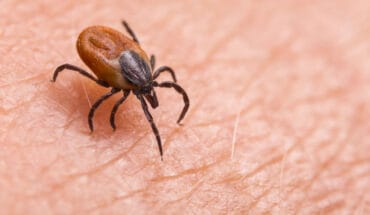You are probably sick of quarantine and wish life would go back to the way it was before the Covid-19 Pandemic spread across the globe. Now all you can do is hope that this Pandemic ends soon, but how could that happen? In today’s video we’re going to look back at previous pandemics in history to see how they resolved and hopefully give you some insight into how the current Pandemic will eventually end. https://www.theinfographicsshow.com
Transcript
If you’ve spent any time at all on the internet in the last few months, you probably feel very well-educated about how outbreaks start, how diseases spread, and even how to protect yourself during a pandemic.
But what about how pandemics end? How do we know when we’re in the clear and it’s safe to go back to life as normal? Or, are we destined to spend the rest of our lives in quarantine? To find out, let’s take a look back in time at how some past pandemics have ended and see if there’s any hope of easing up on social distancing before summer is over.
Before we can talk about how pandemics end, we first have to understand what the “end” of a pandemic actually means. How do we know when it’s over, and who exactly is it over for? What specific criteria or milestones are we aiming for before we can declare a pandemic over? And who actually decides that the pandemic has ended? According to medical historians, pandemics actually have two types of ending – a medical ending and a social ending.
A medical ending happens where there are no people left to get sick. That doesn’t necessarily mean that everyone is dead – although that’s certainly one way a pandemic can end.
An outbreak can be ended medically when the infection can no longer spread, either because a significant percentage of people are immune or have been vaccinated, or even because of strict social distancing measures making it impossible for the infection to find new victims.
The dreaded Bubonic Plague is the perfect example of a pandemic ending medically because the disease ran out of victims. There have been 3 major outbreaks of the Plague in history.
1.) The first one, called The Plague of Justinian, wiped out nearly half the world’s population in the 6th century. It only ended when there was no one left to die – the death rate was so high, and some experts theorize that the survivors must have been largely immune, so eventually the outbreak ended when it ran out of new victims.
2.) The second and most famous outbreak was started in China in 1331, killing half the population there before spreading to Europe, North Africa and the Middle East.
The disease killed 200,000,000 people in just 4 years, wiping out up to one third of the European population.
Fun fact – we have this particular pandemic to thank for the whole idea of “quarantine”. During the medieval outbreak people were still clueless about how diseases really spread, but they were starting to catch on to the idea that being in close proximity to an infected person was a great way to get sick. The city of Venice started making newly-arrived sailors stay on their ships for a period of time after arriving in port before they could enter the city. At first, it was 30 days, but it was eventually increased to 40 days, a period of time called a “quarantino”.
During later flare-ups of the disease in the 1500s, England imposed the first quarantine laws – any home with an infected person in it was required to mark their house with a white pole, and carry the pole with them in public so that other people could avoid them.
England took things a step further during another flare up in 1665 and banned all public entertainment and gatherings. That sounds awfully familiar.
On top of these new quarantine measures, the medieval Plague outbreak also planted the early seeds of social distancing. As the plague spread and the death toll continued to climb, many people took shelter in their homes and hid out from the disease.
Of course, we also saw the first glimpses of the difficulties of getting people to stay at home – as the Plague ravaged Italy, many were determined to live it up before the end. Defiant revelers took to the streets, drinking, dancing and singing even as the bodies piled up around them.
3.) The last major outbreak of the Plague started in China in 1855 and once again spread across the world. After it killed 12,000,000 people in India, entire neighbourhoods were burned to the ground in a desperate effort to stop the disease – even though no one knew at the time if that would even help.
Experts aren’t sure exactly why each outbreak ended – perhaps the Plague ran out of victims, or the colder weather weakened it, or it could have mutated and become less deadly.
Each of these outbreaks eventually did end, but the disease wasn’t gone.
In fact, it’s still around today.
Plague outbreaks are endemic among prairie dogs in the southwestern US, and from time to time it even makes its way to humans.
Dr. Frank Snowden, a Yale historian, has a friend who contracted the plague in the US a few years ago from a dog that had been infected with Plague-ridden fleas.
Remember earlier when we said that there are two ways that a pandemic can end? We just talked about the many ways that a pandemic can medically end, but pandemics can also have a social ending. According to Dr. Jeremy Green, a historian of medicine at Johns Hopkins, “When people ask, ‘When will this end?’, they are asking about the social ending.
A social end to the pandemic doesn’t mean the disease is gone – it just means that people have learned to live with it. A pandemic can end socially when people stop fearing the disease, become sick of quarantine restrictions, and decide they are willing to risk getting the disease to go on with daily life. The infamous Spanish Flu outbreak of 1918 is a great example of a social end to a pandemic.
The aggressive and deadly strain of the flu virus that tore across the globe and killed millions, prompted one doctor to say that it “demonstrated the inferiority of human inventions in the destruction of human life” – and that’s saying a lot, considering the world was in the midst of the bloody trench battles of World War 1 at the time of the outbreak.
The virus eventually mutated into a less severe form of the flu, and medically the pandemic slowly tapered off, even though the disease definitely hadn’t gone away. But the pandemic ended socially even while the disease continued to wreak havoc.
By the time World War 1 was over, people everywhere were sick of death and tragedy, and they were ready for a fresh start. After the horrors of war, people were willing to risk disease to return to “normal” life as soon as possible. The fact is, it’s not an either-or situation.
Pandemics don’t end medically or socially – most end socially before they end medically, and a true medical ending is actually nearly impossible. In most cases, we learn to live with the disease and manage its spread to prevent widespread outbreaks, but it’s rare that a disease is truly medically eradicated.
Smallpox is one of the very few exceptions. Smallpox had plagued the world for more than 3,000 years, and 30% of those who contracted the dreadful illness died a painful death.
In 1633, shortly after the first European explorers arrived in the New World, a Smallpox epidemic devastated the native populations.
The disease had arrived with the explorers, and since none of the native people had any kind of immunity against the disease, it spread like wildfire, killing up to 90-95% of the native population in some of the hardest hit areas. There are a few different reasons why our efforts to fight Smallpox were so successful. The most important development was the discovery of a successful, lifelong vaccine.
The disease’s unusual symptoms – a rash that turns into pus-filled spots which crust and then fall off – also made it easy to identify the illness, and infected people could be quarantined quickly, limiting the spread of the disease. Another thing that helped defeat Smallpox was the fact that it can’t be transmitted by animals, meaning that once the disease was eliminated in humans, we no longer had to worry about it continuing to circulate and mutate in animals and reemerging as a threat in the future.
All of these factors combined to make Smallpox one of the few diseases that we can now confidently say has been medically eradicated. The last person to contract Smallpox naturally was a man named Ali Maow Maalin, a hospital cook in Somalia in 1977.
Ali thankfully recovered from the Smallpox infection and went on to live a long life. He died in 2013 of Malaria, another extremely problematic infectious disease.
The social aspect of a pandemic can be just as dangerous as the disease itself – sometimes moreso! Back during the Ebola outbreak in West Africa, an epidemic of fear about the disease spread faster than the disease itself.
Dr. Susan Murray, who worked in a hospital in Ireland during the outbreak, recalls the atmosphere of fear and panic, even as the outbreak was tapering off.
She remembers some health professionals refusing to treat potentially infected patients, and people beginning to look at foreigners with suspicion.
Dr. Murray said: “If we are not prepared to fight fear and ignorance as actively and as thoughtfully as we fight any other virus, it is possible that fear can do terrible hurt to vulnerable people, even in places that never see a single case of infection during an outbreak.”
The fear generated by each new outbreak also amplifies the fear of the next one. Since a next outbreak is inevitable, it’s important that we learn to deal with the fear that surrounds a pandemic to minimize the social harms caused by outbreaks. Pandemics are one of the biggest threats we humans face in modern times.
EndingPandemics.
org has projected that the next big pandemic could cost upwards of $60 billion and could kill 30 million people in just 6 months. They explain that because the number of new infectious diseases is rising, and people are travelling further and faster than ever before, the risk of a major global pandemic continues to climb. This might sound daunting, but don’t worry – EndingPandemics.
org has a plan for how to minimize the impact of the next outbreak.
Because most outbreaks in humans start in animals, they believe that better monitoring of disease outbreaks in animal populations, as well as better communication and a faster response to new infections, will help prevent future outbreaks and give countries time to prepare for the next one.
So, that brings us to the million dollar question – when and how will this particular pandemic end? Well, it won’t medically end at least until we have a vaccine – and then it will take time to vaccinate the whole world and be able to say that the pandemic is medically over.
Even then, we’ll still need to be watching out for new strains of the virus. Socially, though, it looks like this pandemic could end quite soon, regardless of whether it’s medically safe or not.
People are getting frustrated with social distancing and quarantine measures, and the economic and social impacts of months of shut down are starting to scare people more than the disease itself.
The end of the pandemic won’t be a sudden victory.
Even if a vaccine is developed, it will take time to get the whole world vaccinated. Before that happens, the pandemic will likely start to end socially, as communities and countries begin to ease up on quarantine measures.
Another factor that makes it tricky to pinpoint the end of a pandemic is the fact that the outbreak affects different areas differently. Even when an outbreak spreads all around the world, some areas might experience intense outbreaks and high death rates, like what we saw in New York, while other areas might not see any cases at all.
At some point, the World Health Organization will declare the global pandemic emergency to be over, but individual countries might have already beaten them to the punch, while some others might still be battling the outbreak.
Whatever happens, we’re going to need to learn to live with the disease and manage its spread while we wait for a medical ending to the pandemic. And, since the next pandemic might be just around the corner, we’d be wise to keep our quarantine and social distancing skills sharp for the future.
- Breaking the ice for men’s mental health - 26th December 2025
- New bowel cancer test for early detection - 26th December 2025
- New method accelerates resistance testing in UTIs - 26th December 2025






